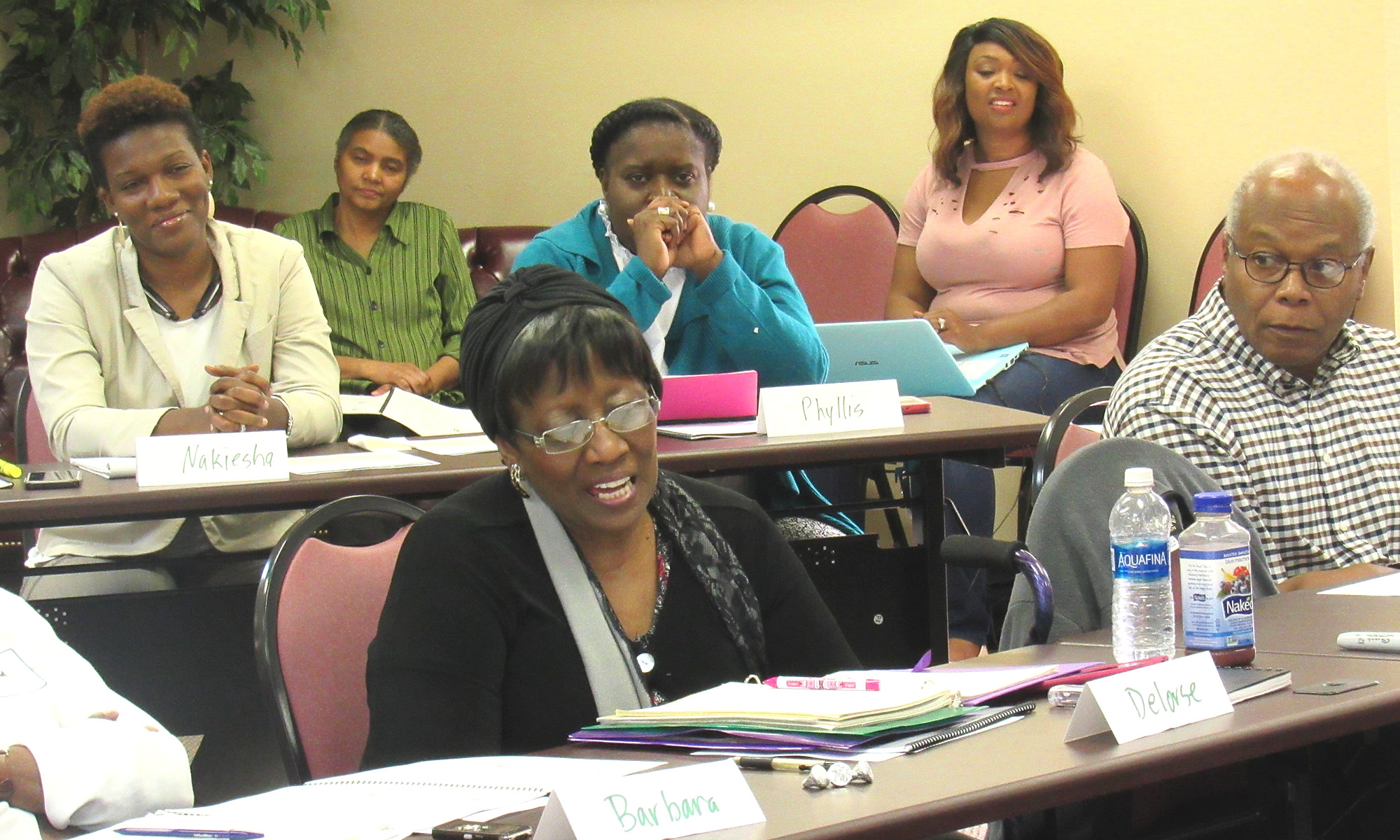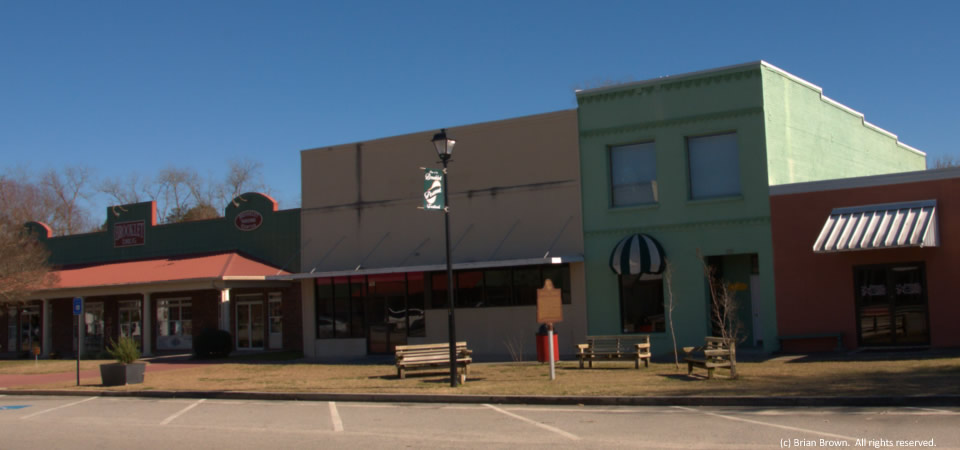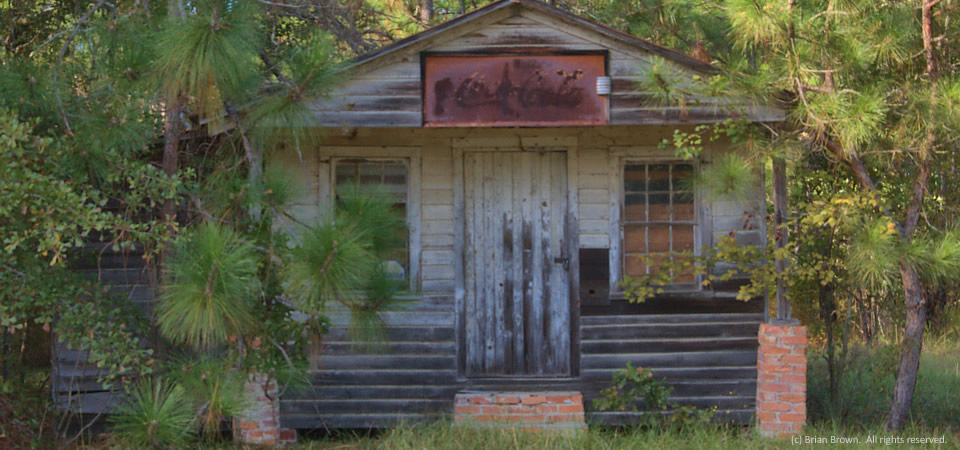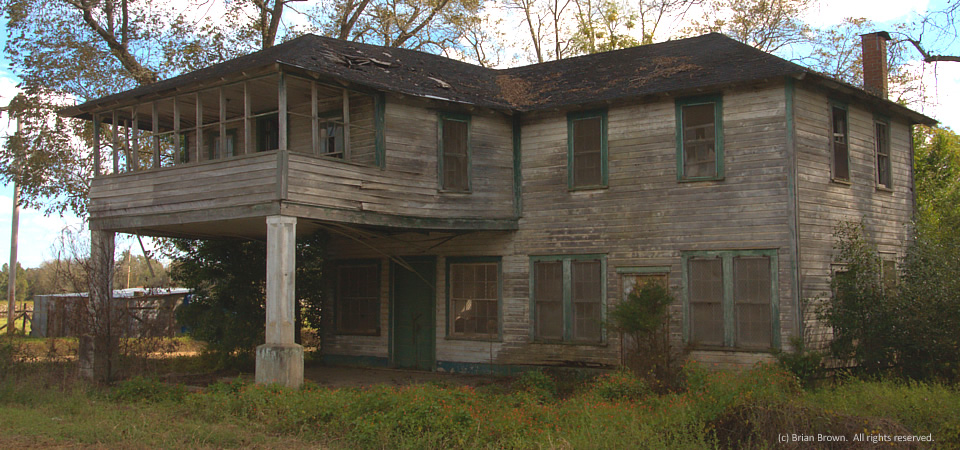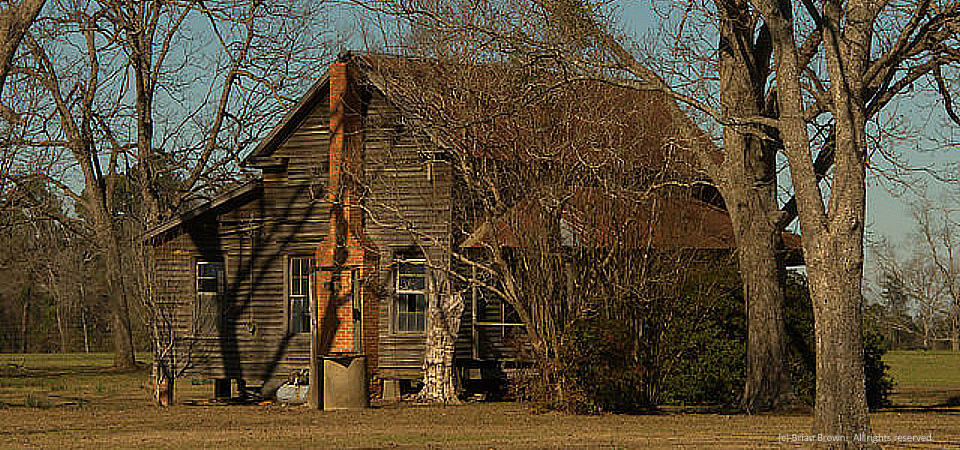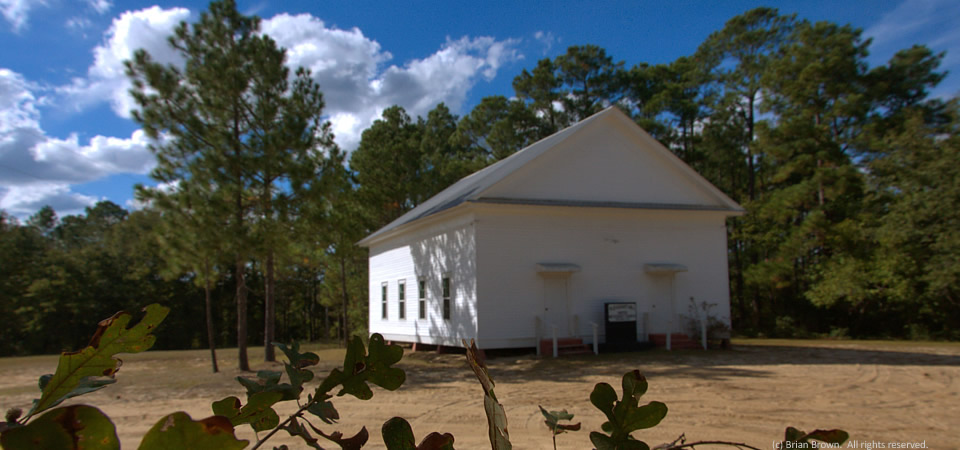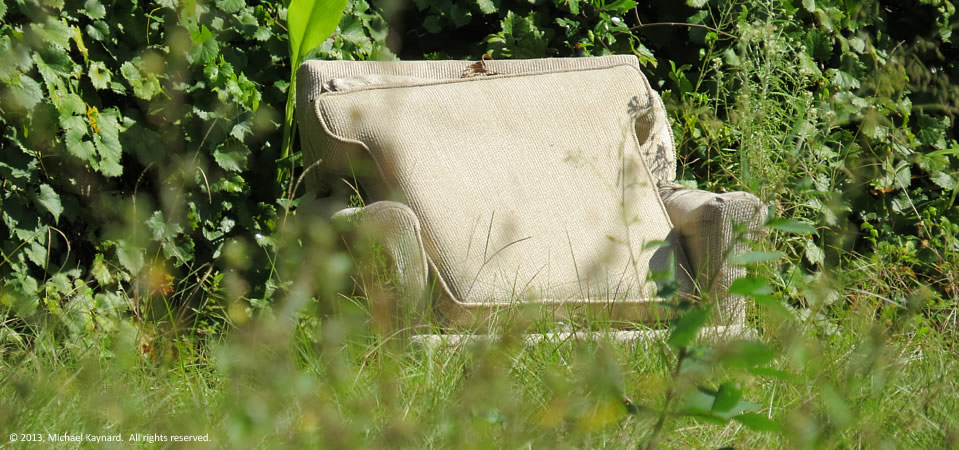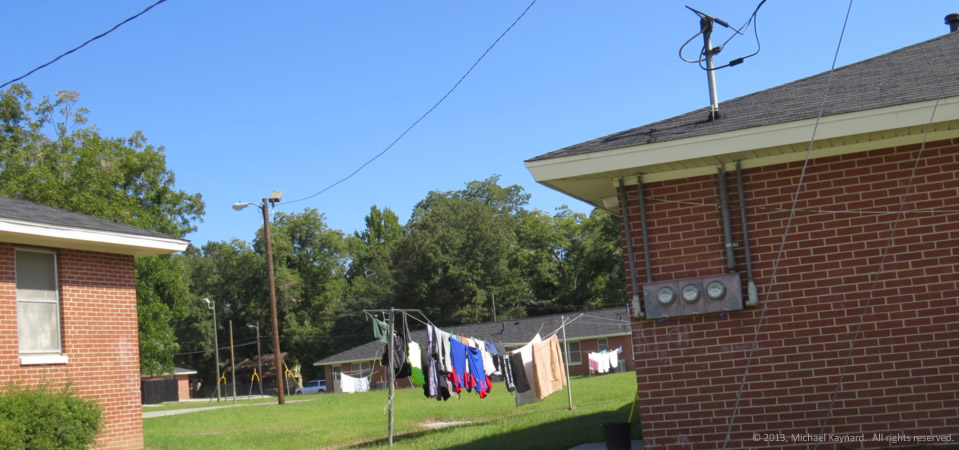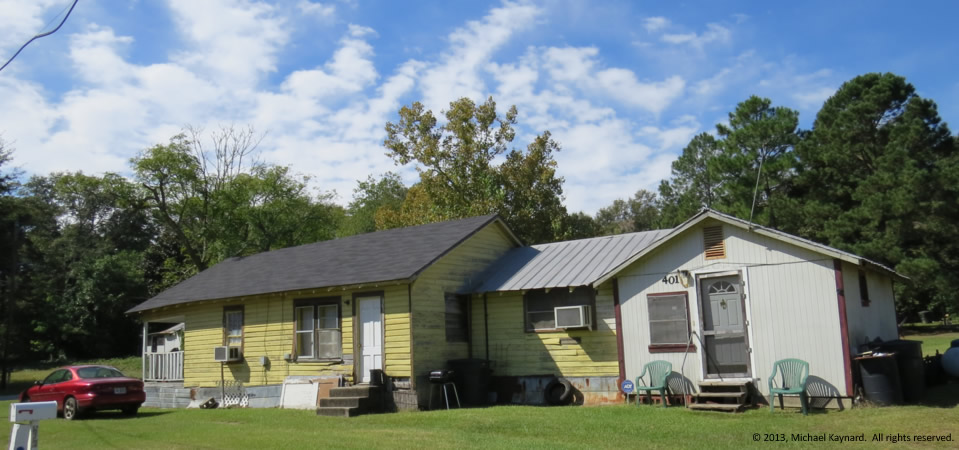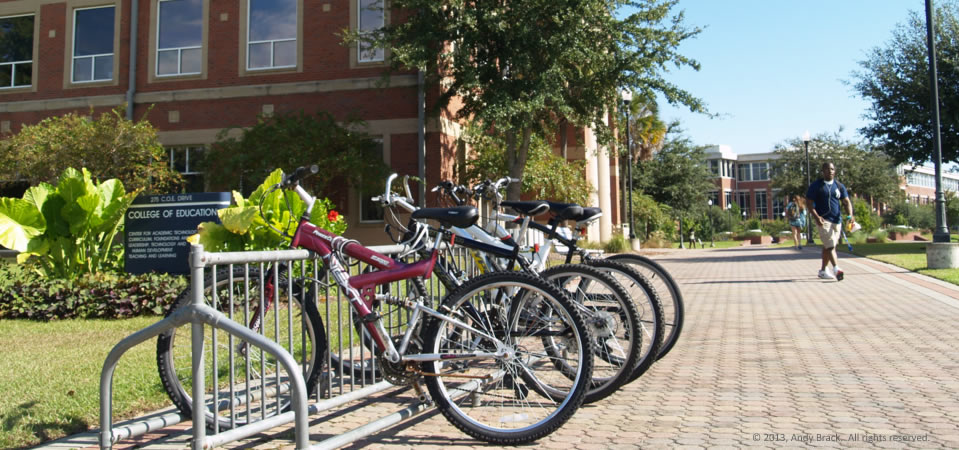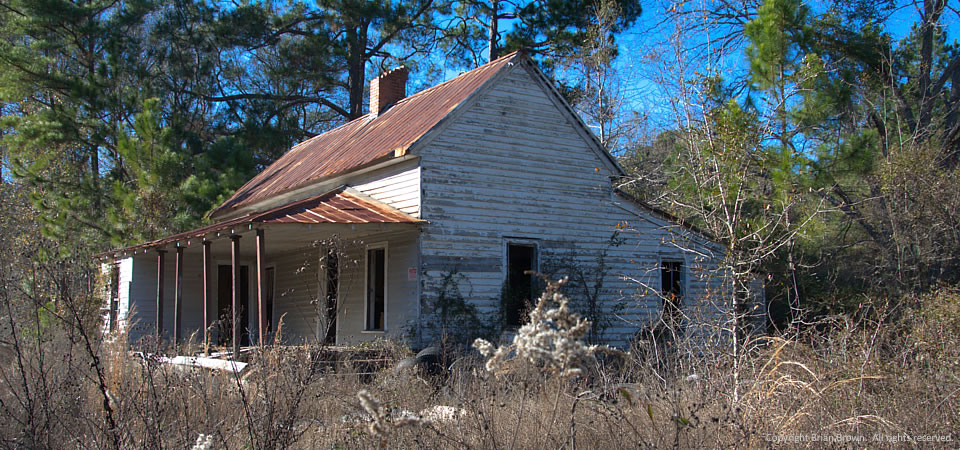
VanishingSouthGeorgia.com photographer Brian Brown writes that this old tenant cabin is on the road to Adabelle, Ga., south from Statesboro in Bulloch County.
“I’m not sure if it was associated with the Croatan Indian community that once thrived in the area. A nearby historic marker tells the store of the Croatan community:
“In 1870 a group of Croatan Indians migrated from their homes in Robeson County North Carolina, following the turpentine industry to southeast Georgia. Eventually many of the Croatans became tenant farmers for the Adabelle Trading Company, growing cotton and tobacco. The Croatan community established the Mt. Zion Baptist Church in Adabelle, as well as a school and a nearby cemetery. After the collapse of the Adabelle Trading Company, the Croatans faced both economic hardship and social injustice. As a result, most members of the community returned to North Carolina by 1920. The tribe to which these families belonged became known as the Lumbee in the early 1950s.”
Copyrighted photo by Brian Brown. All rights reserved.
